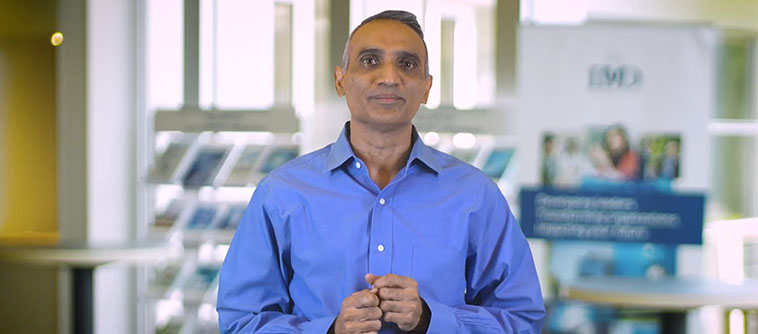No one claims that the key to organizational buoyancy is to remain stagnant. But for companies operating in the face of today’s economic fallout, the ability to determine where and how to leap in the right direction is essential. This entails jumping from one “S–curve” – a graph that illustrates the cumulative data for a project, such as cost or work hours, plotted against time – to another to ensure survival.
“If your organization can’t jump, it will eventually die,” said Goutam Challagalla, IMD Professor of Strategy and Marketing, about the consequences of failing to adapt.
In the fallout from the COVID-19 pandemic, many businesses have faced huge gaps to surmount, but have not found the strength – or the know-how – to spring into a new way of operating.
“We saw many retailers go bankrupt when they didn’t jump on ecommerce fast enough,” said Challagalla. “Companies need to know what S-curves will be emerging by actively scanning environments.”
Benefit – don’t break – from a disruptive shift
Over the past decade, new disruptive S-curves have emerged because of radical changes in technology, the introduction of innovative business models and major shifts in macro factors such as regulation or customer/consumer tastes.
Typically, these disruptive shifts bring out changes in market leadership.
“Some firms are able to make the shift more easily than others, but why?” said Challagalla, who has developed a framework for innovation and has examined how companies use this framework to leap to the next S-curve.
His framework looks at the disruptive shifts and why they occur and identifies the new forms of innovation companies have used for disruption.
“Draw the S-curves for your company,” he recommended. “Identify where you are strong and where you are weak, and the determine the change drivers.”
Which S-curve and how?
Beyond determining the right S-curve, Challagalla believes many companies struggle with exactly how to make the jump. Organizations know they need to go virtual, for example, but they remain trapped in a face-to-face mindset.
“Ten to 20% of companies make the jump successfully,” he said, “but there are many body bags along the way.”
A primary reason that this occurs is due to a change in these five macro factors: social, technological, political, legal and environmental.
In total, “85% of opportunities come about in one or more of these areas,” said Challagalla, offering “emerging macrotrends that bring up new opportunities for the business.”
Two examples of these are the shift from fixed lines to mobiles phones, and from traditional vehicles to driverless cars.
“Few organizations are able to take advantage of the idea of S-curves in certain industries,” said Challagalla. “Those that do well are abreast of any macro factors that could lead to big shifts.”
Join IMD Professor of Strategy and Marketing Goutam Challagalla for his session Revitalize your strategy – jump to a new S-curve at OWP liVe from 17-19 November 2020.
